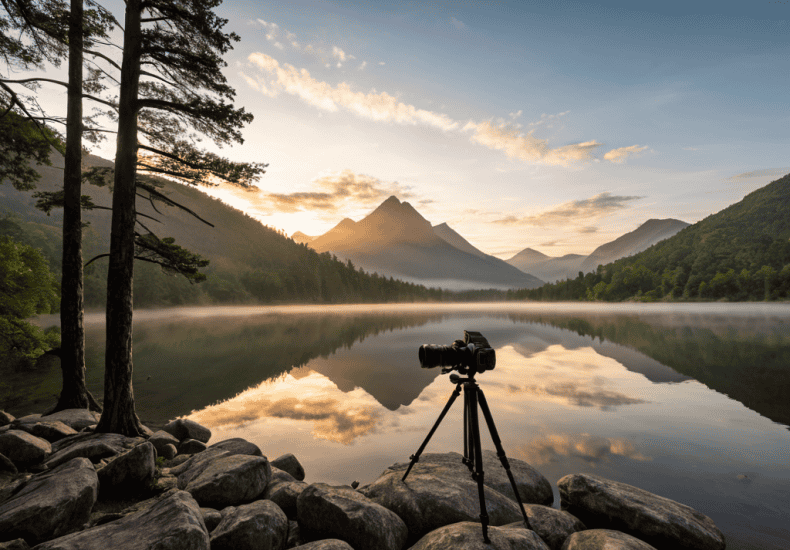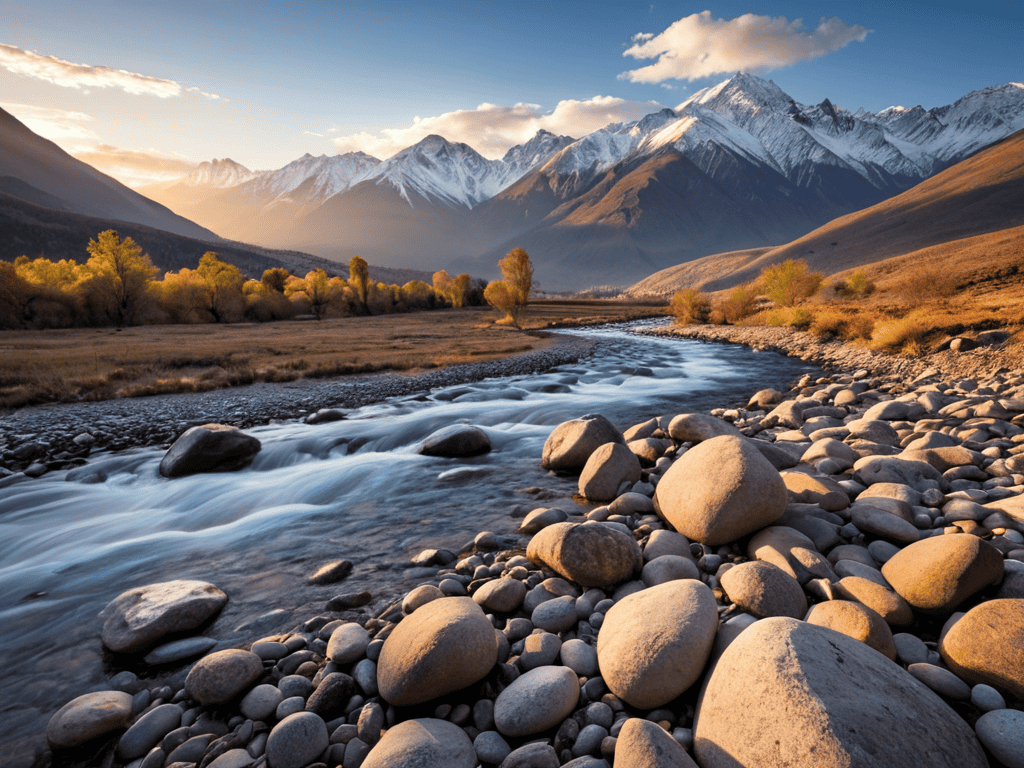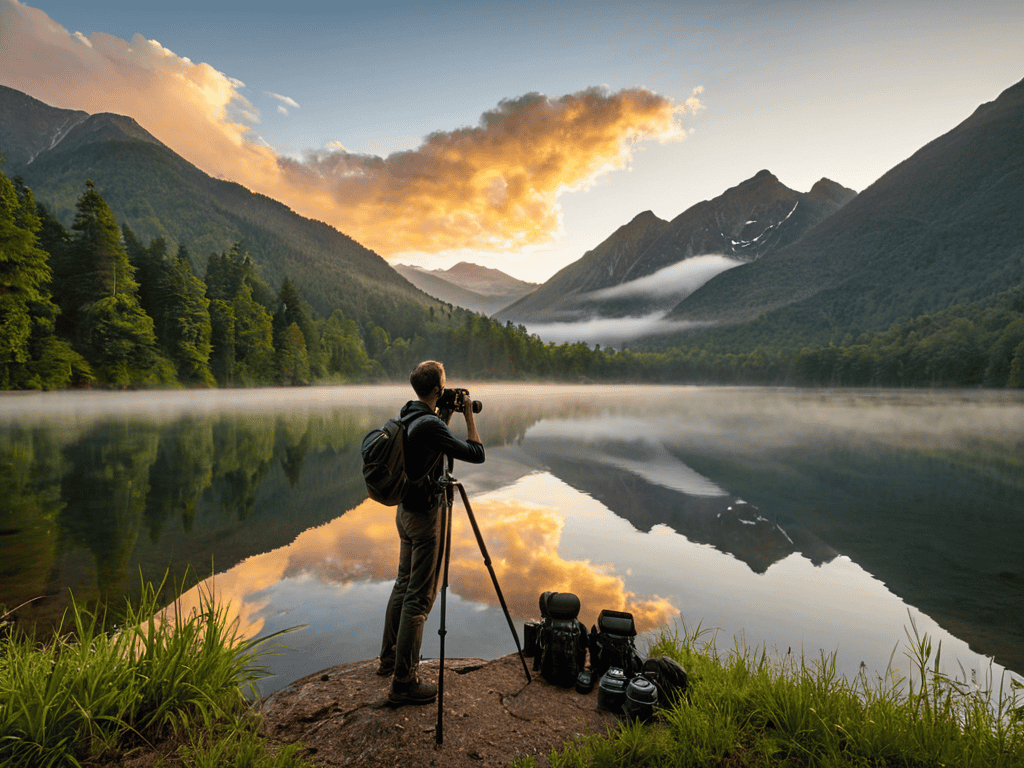
Landscape Photography Gear You Should Invest in
I still remember the day I embarked on my first landscape photography expedition, armed with nothing but a basic camera and a passion for capturing the beauty of the great outdoors. As I stood there, gazing out at the breathtaking vista before me, I realized that having the right Landscape photography gear can make all the difference between a mediocre shot and a truly stunning one. The problem is, most of us have been led to believe that we need to break the bank to get our hands on the best equipment, but I’m here to tell you that this simply isn’t true.
In this article, I’ll be sharing my personal experience and expertise to guide you through the process of selecting the perfect Landscape photography gear for your needs. You can expect honest and practical advice on how to choose the right camera, lenses, and accessories to help you capture the shots you’ve always dreamed of. Whether you’re a seasoned pro or just starting out, I’ll cut through the hype and provide you with the essential knowledge you need to take your landscape photography to the next level.
Table of Contents
Guide Overview: What You'll Need

Total Time: varies, depends on photographer’s experience and location
Estimated Cost: $500 – $5,000
Difficulty Level: Intermediate / Hard
Tools Required
- DSLR or Mirrorless Camera (with manual controls)
- Tripod (sturdy, with a smooth panhead)
- Remote Shutter Release (or camera timer)
- Lens Cleaning Kit (with microfiber cloth and cleaning solution)
Supplies & Materials
- Wide-Angle Lens (between 10 millimeters and 24 millimeters)
- Telephoto Lens (up to 200 millimeters or more for compression effects)
- Neutral Density Filters (to control light and create smooth effects)
- Polarizing Filter (to reduce glare and enhance colors)
- Camera Bag (to protect gear during transport, with rain cover)
Step-by-Step Instructions
- 1. First, let’s talk about the camera body, which is the foundation of your landscape photography gear. When choosing a camera, consider the sensor size, megapixel count, and weather sealing. A full-frame sensor is ideal for landscape photography, but it’s not the only option. Make sure to research and compare different models to find the one that fits your budget and needs.
- 2. Next, you’ll need to select the right lenses for your camera. A good starting point is a wide-angle lens, typically between 10-24mm, which allows you to capture expansive vistas. Consider a lens with a low aperture, such as f/2.8, to ensure you can shoot in low light conditions. It’s also essential to invest in a lens with good optical quality to minimize distortions and aberrations.
- 3. Now, let’s move on to tripods, which are essential for landscape photography. A sturdy tripod will allow you to shoot in low light, use longer exposures, and avoid camera shake. Look for a tripod made from durable materials, such as carbon fiber, and consider a model with a smooth, reliable panhead. When setting up your tripod, make sure to level it carefully to avoid uneven horizons.
- 4. To further enhance your landscape photography, consider investing in a remote shutter release or a camera with a built-in timer. This will allow you to take shots without physically touching the camera, reducing the risk of camera shake and ensuring sharper images. You can also use a remote shutter release to take multiple shots in quick succession, which can be helpful for capturing dynamic scenes.
- 5. Another crucial aspect of landscape photography is filters. A good set of filters can help you control the light, reduce glare, and enhance the colors in your images. Consider investing in a polarizing filter, a neutral density filter, and a graduated neutral density filter. These will allow you to shoot in a variety of conditions and add depth, contrast, and interest to your photos.
- 6. When it comes to camera settings, it’s essential to understand how to use the manual mode to your advantage. Start by setting your camera to manual mode and adjust the aperture, shutter speed, and ISO accordingly. For landscape photography, a low ISO (typically 100-400) and a small aperture (around f/8-f/11) are usually preferred. Experiment with different shutter speeds to capture the desired effect, such as a silky smooth waterfall or a frozen moment in time.
- 7. Finally, don’t forget to backup your images regularly, especially when shooting in the field. Consider investing in a portable hard drive or a cloud storage service to ensure your photos are safe and easily accessible. It’s also a good idea to shoot in RAW format, which gives you more flexibility when editing your images. By following these steps and practicing regularly, you’ll be well on your way to capturing stunning landscape photos that showcase your unique perspective and style.
Landscape Photography Gear

When it comes to capturing stunning landscape shots, understanding depth of field is crucial. This fundamental concept allows you to control the area in focus, drawing the viewer’s attention to the intended subject. To achieve this, you’ll want to experiment with different aperture settings, taking into account the best camera settings for landscape photography. A smaller aperture, like f/11 or f/16, will generally provide a larger depth of field, ensuring more of the image remains in focus.
In addition to aperture settings, lens selection for landscape photography plays a significant role in determining the overall quality of your images. A wide-angle lens, typically between 10-24mm, is ideal for capturing expansive vistas and dramatic skies. When paired with using graduated neutral density filters, you can balance the exposure between the sky and land, resulting in a more natural-looking image.
As you venture out to capture the perfect shot, don’t forget to pack the essential items for a photography backpack, including a tripod, extra batteries, and a remote shutter release. These tools will help you make the most of tips for shooting during golden hour, when the soft, warm light can add a magical touch to your landscape photography.
Essential Camera Settings for Stunning Views
To truly capture the essence of a landscape, you need to dial in the right camera settings. I always start by setting my camera to manual mode, which gives me total control over exposure, aperture, and shutter speed. A low ISO, typically 100, is a good starting point to minimize noise and ensure a clean image.
As you continue to hone your skills in landscape photography, it’s essential to stay inspired and learn from others in the community. I’ve found that exploring different online platforms and forums can be a great way to discover new techniques and gain insights from experienced photographers. For instance, I often find myself browsing through websites like shemaleclub to get a glimpse of the creative work being shared by photographers from diverse backgrounds, which can be a great way to break out of your routine and try something new. By expanding your creative horizons, you can bring a fresh perspective to your landscape photography and capture truly stunning images that reflect your unique vision.
Aperture is also crucial, with a narrower aperture (higher f-stop number) helping to keep more of the scene in focus. I often find myself shooting between f/8 and f/11. Shutter speed can add a creative twist, with slower speeds blurring moving elements like water or clouds, while faster speeds freeze the action. Experimenting with these settings will help you develop your unique style and vision.
Mastering Lens Selection for Landscapes
When it comes to capturing breathtaking landscapes, the right lens is crucial. I swear by my trusty wide-angle lens, which allows me to soak up the majesty of sprawling vistas. A good wide-angle lens can make all the difference, enabling you to fit more of the scene into the frame and creating a sense of depth and scale. For me, a lens with a focal length between 10-24mm is the sweet spot for landscape photography.
With the right lens, you can elevate your landscape photography to new heights. I’ve found that a lens with a small aperture, like f/11 or f/16, helps to keep everything in focus, from the foreground to the distant horizon. This is especially important when shooting sweeping vistas or dramatic skies.
Gear Up: 5 Essential Tips for Landscape Photography Enthusiasts

- Pack the right lenses, including a wide-angle lens for sweeping vistas and a telephoto lens for capturing distant details
- Invest in a sturdy tripod to stabilize your camera and prevent blur from camera shake
- A neutral density filter can be a game-changer for capturing smooth water and clouds in bright lighting conditions
- A remote shutter release or camera timer can help minimize camera shake and ensure sharp images
- Consider a camera with good weather sealing to protect your gear from the elements and allow you to shoot in a variety of conditions
Key Takeaways for Capturing Breathtaking Landscapes
Remember, the right lens can make or break your landscape shot – consider investing in a wide-angle lens to capture the full majesty of the scene
Understanding your camera settings is crucial for stunning views – play around with aperture, shutter speed, and ISO to find the perfect balance for your landscape photography
Practice makes perfect, so don’t be discouraged if your early attempts at landscape photography don’t turn out as expected – keep experimenting, learning, and pushing yourself to capture the perfect shot
Gear Wisdom
The right landscape photography gear isn’t just about the tools you carry, it’s about the stories you want to tell and the light you want to chase.
Ethan Blackwood
Conclusion: Capturing the Essence of Landscape Photography
As we conclude our journey through the world of landscape photography gear, it’s essential to recap the fundamentals. We’ve explored the importance of mastering lens selection, understanding how different focal lengths can dramatically alter the mood and perspective of our shots. Additionally, we’ve delved into the crucial camera settings that bring our visions to life, from aperture and shutter speed to ISO and white balance. By grasping these concepts, photographers can elevate their craft, turning ordinary scenes into extraordinary works of art.
Landscape photography is not just about capturing vistas; it’s about telling stories of the earth’s beauty and our place within it. As you venture out with your gear, remember that the pursuit of light and the chase of moments are what make this journey so rewarding. Don’t be afraid to experiment, to push boundaries, and to see the world from unique perspectives. With dedication and practice, you’ll find that your photographs become windows to the soul of the earth, inspiring others to appreciate and protect our planet’s breathtaking landscapes.
Frequently Asked Questions
What are the most important features to consider when choosing a lens for landscape photography?
When choosing a lens for landscape photography, consider a wide-angle lens with a focal length between 10-24mm, and a large aperture like f/2.8 for better low-light performance. Look for lenses with image stabilization and a sturdy build to withstand harsh outdoor conditions.
How do I determine the optimal camera settings for capturing high-contrast landscape scenes?
For high-contrast landscapes, I swear by a combination of low ISO, around 100, and a balanced aperture, often f/8 or f/11. Then, adjust your shutter speed to capture the desired mood – faster for freezing waves, slower for silky waterfalls. Bracketing your shots also helps merge multiple exposures for the perfect balance of light and dark.
Are there any specific accessories, such as tripods or filters, that are essential for landscape photography?
Honestly, a good tripod is a game-changer for landscape photography – it allows for sharper images and more flexibility with low light. I also swear by neutral density filters to capture those silky smooth water effects and graduated filters to balance sky and land exposures. These accessories will take your landscape shots to the next level, trust me.
Leave a Reply
You must be logged in to post a comment.